

Josh Nevett
CarExpert's top five large SUV reviews of 2025
3 Days Ago
Hear from Toyota's senior engineers and developers as they discuss the enormous challenge of making a whole new LandCruiser.

Senior Contributor
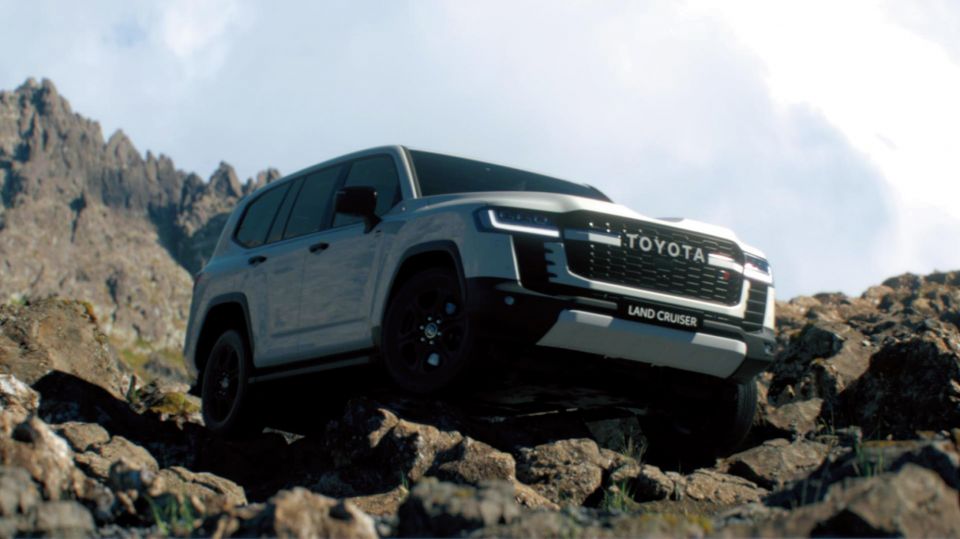

Senior Contributor
Toyota LandCruiser Chief Engineer Takami Yokoo said time spent driving all over Australia in the old 200 Series left him “deeply moved”, and was a key element in the 300 Series’ global development program.
While Toyota ensures us the LC300 is every bit the off-road beast its predecessors were – in fact, it says the new model overtakes the old 80 Series as the best off-road ‘Cruiser ever – the focus was on maximising comfort.
Are you hearing this, caravaners?
The new 300 Series was revealed overnight in the Middle East and will hit Australian dealers before the end of 2021. It’s the first ground-up redesign since the 200 launched way back in 2007 – not that this has hurt sales.
It’s the first time Toyota’s TNGA architecture has been fitted under a body-on-frame 4×4. The 300 has a new V6 diesel engine in place of the V8, is stiffer yet lighter, billed as quieter on highways, has rejigged suspension with greater articulation, and offers the latest active safety.
Vehicle dimensions including length, width, wheelbase and departure and approach angles are said to be “very close” to the outgoing model, depending on the variant.
Key Toyota figures have given all manner of insights into a development program that went around the globe, and it appears they were aware of the responsibility they bore.
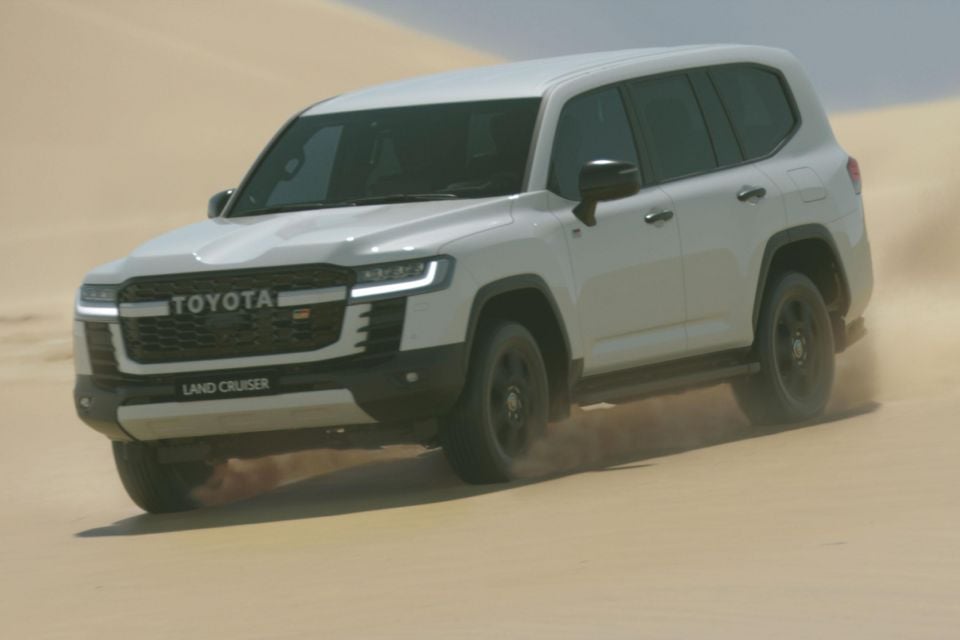
“Even as the times change, LandCruiser has to be true to its core. I was constantly reminding the development team: this is not just a car, it’s the LandCruiser,” said Mr Yokoo.
The chief engineer added that Toyota had “hit a wall” trying to improve collision and safety performance, and to improve driver comfort and NVH suppression, necessitating a “core renewal” that replaced damn near every nut and bolt.
“I drove the LandCruiser 200 around Australia, home to 80 per cent of all the world’s road [types], and realised two important things,” he said. “First, I was deeply moved by how much everyone loves the LandCruiser. The other was that it was much more tiring to drive than I expected.
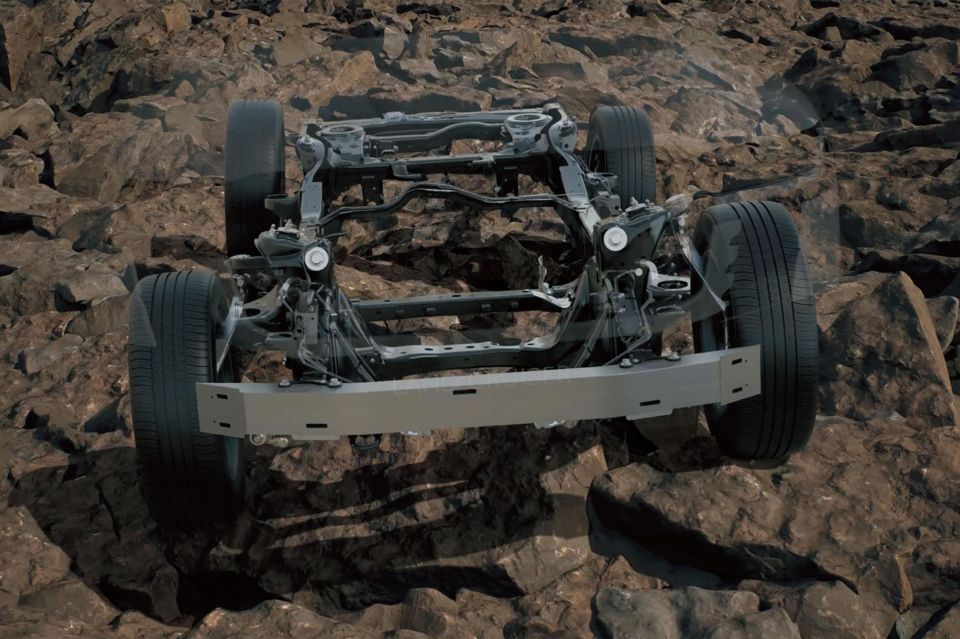
“When travelling on corrugated surfaces or dirt roads, or the seemingly endless Sturt Highway, you have to pay constant attention to how the car handles.
“It was my desire to resolve this issue that inspired manufacturing cars with the development team. This was also the motivation for developing the all new LandCruiser as an easy-to-drive car that won’t cause driver fatigue.”
The 300 Series’ new GA-F body-on-frame platform allows a lowered centre of gravity and better distribution of weight.
Toyota also cites better suspension geometry and a new-iteration electronically actuated Kinetic Dynamic Suspension System (stabiliser bar disconnect).
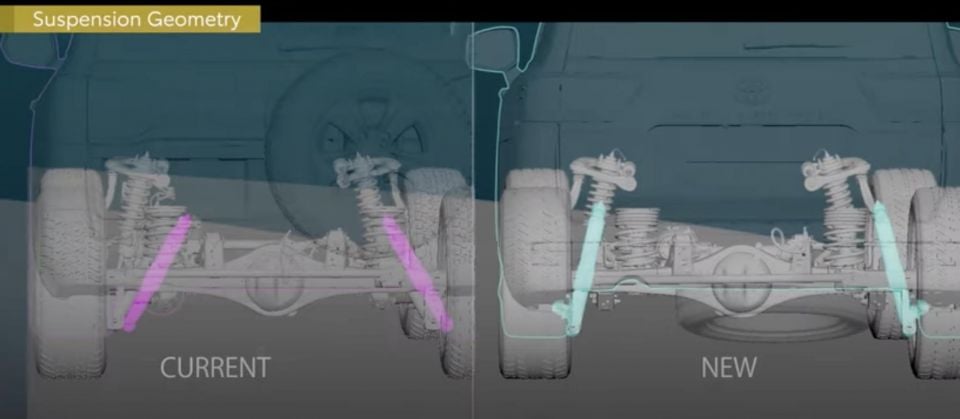
“The rear shock absorbers on the 200 Series had a sharp camber angle for the tyres. The tyres were not aligned with the stroke direction, making the car less steady,” said TMC’s chief expert of off-road drivability, Kazuyuki Ueno.
“We adjusted the frame on the new model to position the shock absorbers perfectly.”
The optimised weight distribution and lowered centre-of-gravity came about under the watch of Ueno-san’s colleague, TMC grand expert of on-road drivability, Akihiro Osaka.
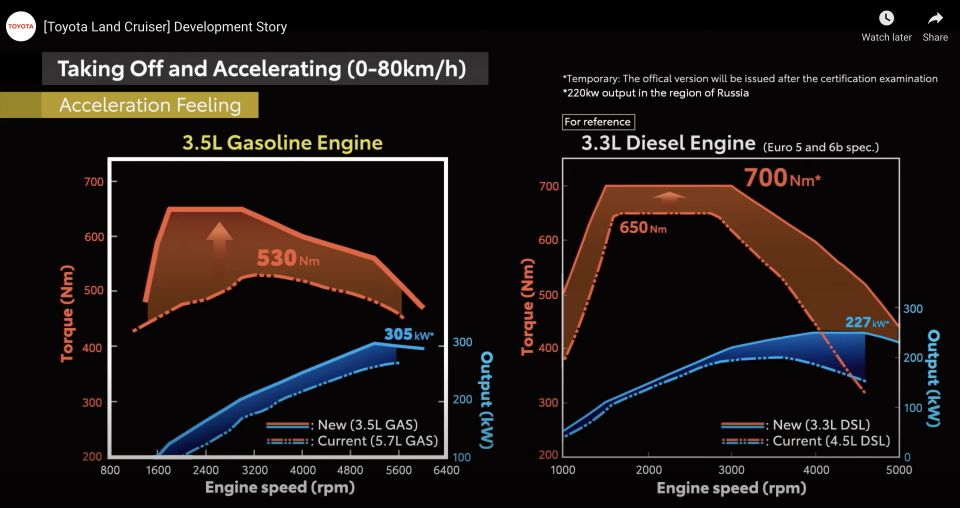
“We moved the heaviest part, the engine and transmission, down 28mm and back 70mm. We also exchanged the V8 engine with the smaller V6 improving on the front-heavy feel of the 200 Series,” Mr Osaka said.
The old 4.5-litre V8 turbo-diesel has been switched out for a 3.3-litre V6 diesel with two turbochargers, making 227kW of power and 700Nm of torque (up 27kW and 50Nm). The old six-speed automatic has been replaced by a new 10-speed transmission with closer ratios.
“The new model delivers power, torque, and economy that far outperforms the 200 Series,” insisted Chief Engineer Mr Yokoo. Much of this is also down to a weight loss program that saw the 300 Series lose around 200kg overall.
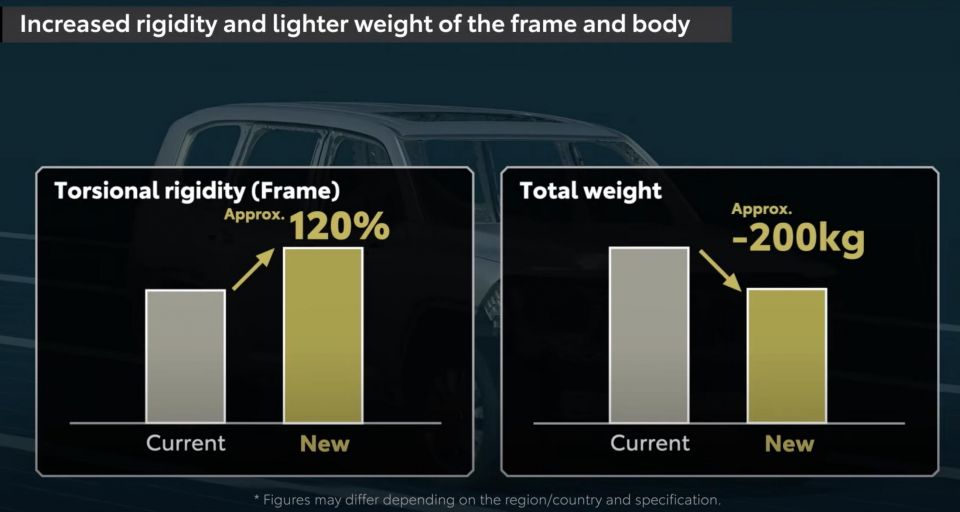
“We pioneered brand new welding technology on the frame eliminating overlap in many places, achieving significant weight reduction,” he said.
“This welding technology used for the first time in the world is a product of the techniques and knowledge of expert welders who have built LandCruiser for years,” added TMC’s welding expert Yasuhiro Yoshihara.
“We achieved [secure and stronger frame] by diligently controlling any effect the heat from welding might have.”
Yokoo-san added another benefit of the new welding techniques used: a claimed 120 per cent increase in torsional rigidity of the frame.
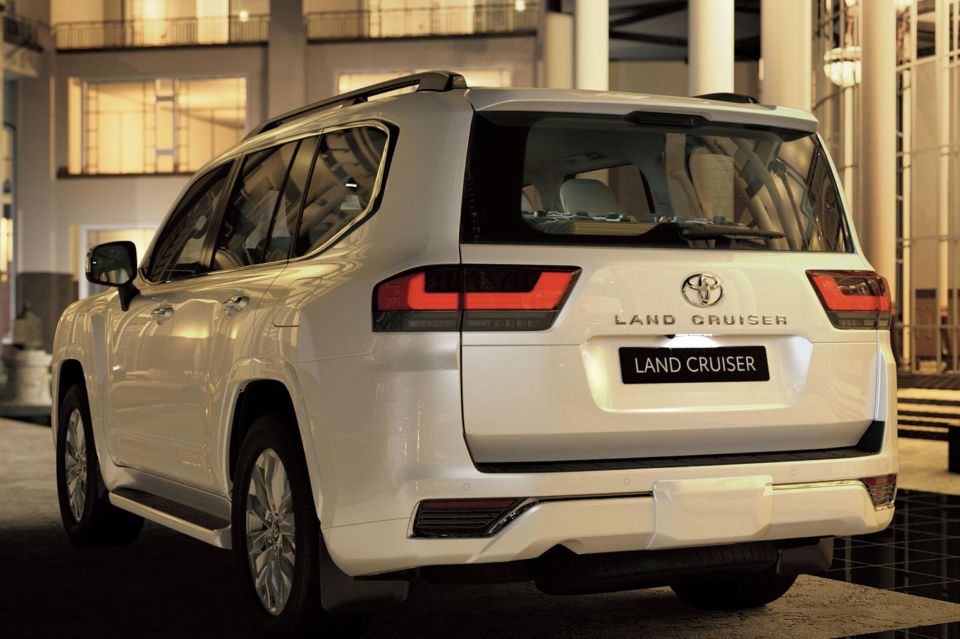
“I am not exaggerating when I say this frame constructed by our expert welders is the epitome of Toyota craftsmanship,” he said.
While on-road comfort was a focus, Toyota says the new KDSS system as well as greater degrees of axle articulation, an improved multi-terrain monitor, and a new automated system that selects the best driving mode based on the surface, all play a role in making the LC300 a 4×4 beast.
“We will never allow anything to get in the way of reliability, durability, and rough road performance, which means we could not change the frame or the wheelbase with its golden ratio that has been the same since the LandCruiser 80 Series,” said Mr Yokoo.
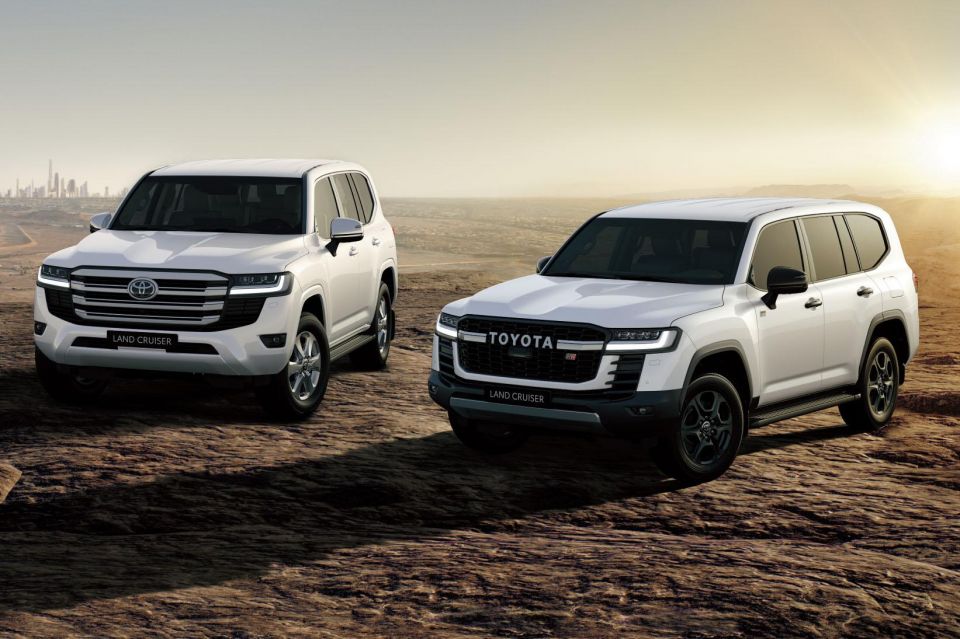
“We actually used the LandCruiser 80 as a guidepost. Even 30 years after it first appeared it has the best rough road performance of any LandCruiser. We want to surpass that rough road performance. The engineering brought this passion into the development of the 300.
“From the initial development phase we drove it on rough roads numerous times, broke it, fixed it, and broke it again. Nothing beats the feedback you get from actual roads. When you develop a LandCruiser, the developers grow too. Myself included.”
The LC300 was put through its paces by Toyota Dakar Rally driver Akira Miura, who said he found the balance to be “superb” after some fettling.
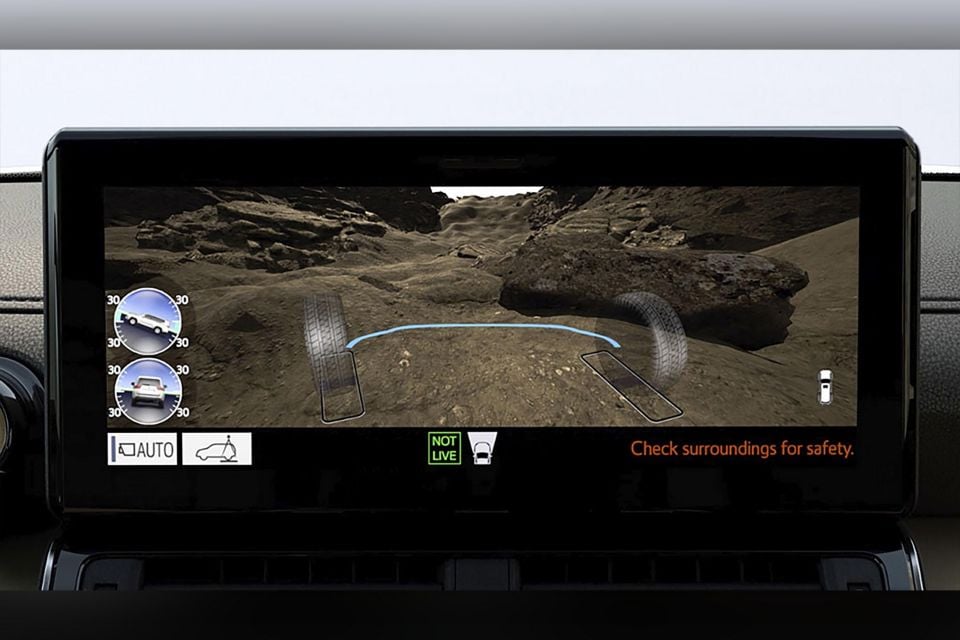
“… The engine has been downsized from the LandCruiser 200. This surprised me in a really good way because the engine is powerful and responds so well to acceleration to reach higher speed ranges,” he claimed.
“Next is the lighter weight of the car and how the weight is balanced, with the heavier elements centred. This means as soon as you turn the steering wheel, the car responds exactly as the driver intends.”
The final word should go to former chief engineer Sadayoshi Koyari, who knows more about the icon than probably anyone else.
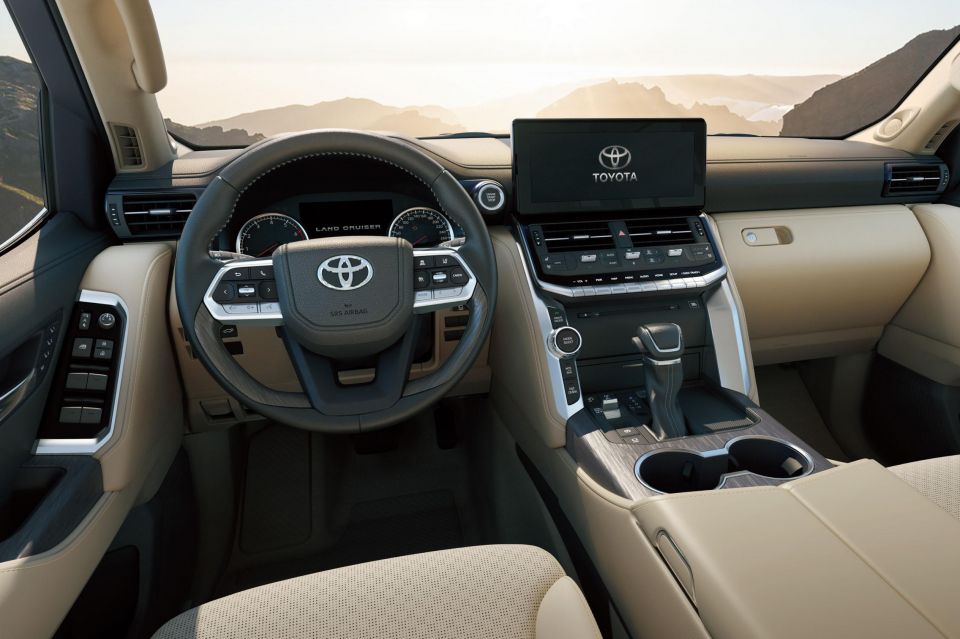
“We have all been taught by our senior colleagues that there is a promise between the LandCruiser and our customers. Our customers trust this car, and many say they think of it as a family member. We cannot betray that trust,” he said.
“I believe this car’s mission is to take you wherever you want to go and bring you home in one piece, no matter what.”
Given Australia is a key market for the LandCruiser – more than ever in this COVID world where domestic road trips are at a popularity peak – Mr Koyari’s words should prove reassuring.
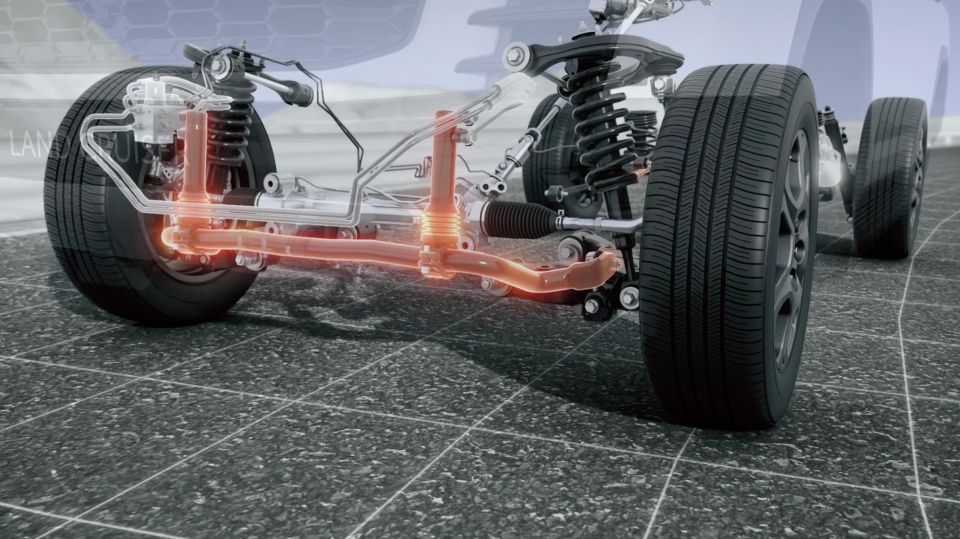
The LandCruiser was launched on August 1, 1951, as the four-wheel drive Toyota BJ. It achieved fame by becoming the first vehicle to reach the sixth checkpoint of Japan’s Mount Fuji.
In Australia, LandCruiser was discovered during development of the Snowy Mountains Hydro-Electric Scheme and its success was confirmed on the properties, mines and worksites of the Outback.
In June 1954, the vehicle was renamed LandCruiser. It is Toyota’s longest-serving nameplate ahead of Corolla, which began in 1966.

To the end of 2020, a cumulative total of approximately 10.4 million LandCruiser 4x4s have been sold in 170 countries and regions worldwide with demand now running at more than 300,000 vehicles a year.
The tally includes 1.12 million vehicles delivered to Australians – more than 10 per cent of all LandCruisers ever sold. The totals include LandCruiser wagons, the heavy-duty 70 Series, and LandCruiser Prado.
“In our quest to make LandCruiser tougher and more capable than ever, we have taken feedback from customers from around the world,” said Toyota Australia vice president sales, marketing and franchise operations, Sean Hanley.
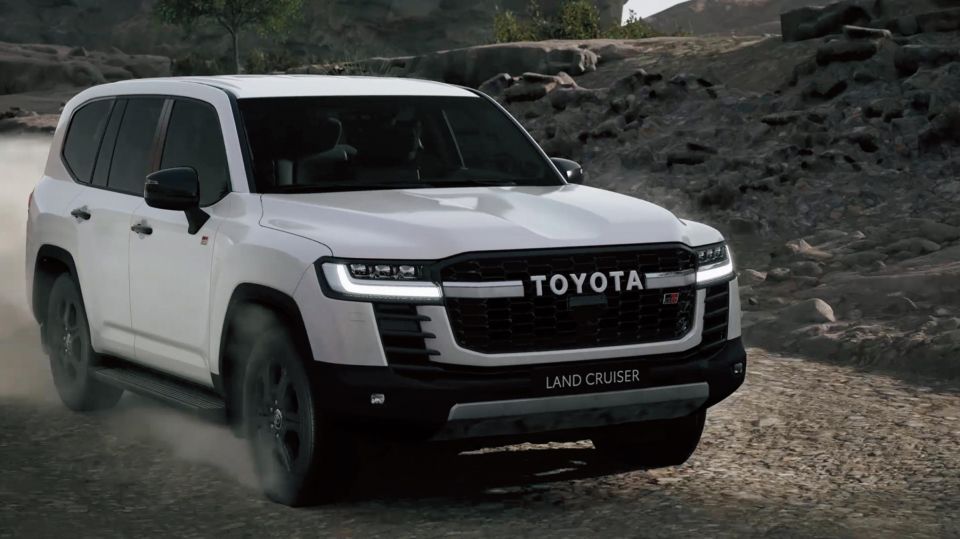
“This includes extensive input from Australian owners who have experience in some of the world’s harshest environments.
“The new LandCruiser range brings improved design and advanced new technologies that advance its performance in all conditions while enhancing its comfort, convenience and safety as a luxury vehicle.”
MORE: Toyota LandCruiser news, reviews, videos and comparisons
Where expert car reviews meet expert car buying – CarExpert gives you trusted advice, personalised service and real savings on your next new car.


Josh Nevett
3 Days Ago


CarExpert.com.au
4 Days Ago


Damion Smy
6 Days Ago


Derek Fung
6 Days Ago


Ben Zachariah
9 Days Ago
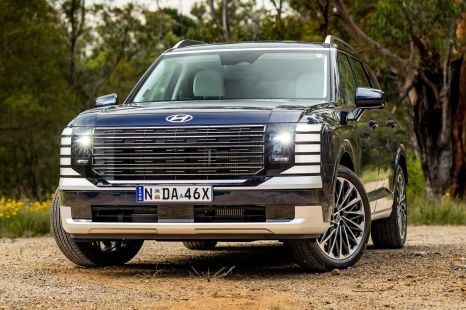

Matt Campbell
12 Days Ago